
When I first step foot in the museums in TMII, the impression that will be immediately captured is the uniqueness of the front facade design. Each museum in TMII has different architectural characteristics, depending on the theme and cultural focus it carries. However, in general, the front facades of the museums in TMII combine traditional architectural elements with a modern touch.
Museum Indonesia, an iconic museum in TMII, has a facade that resembles the structure of a traditional Balinese house. Its towering roof, known as "meru", represents a sacred mountain in the Hindu-Balinese faith. The roof is multi-tiered and supported by large pillars made of high-quality wood. The pillars are decorated with intricate carvings depicting mythological stories and symbolism from Indonesian culture. At the front of the museum, there is a large gate with Balinese ornaments, where the large wooden door is decorated with bright colors and traditional patterns.

Enchanting Ornaments at Museum Indonesia
The ornaments at Museum Indonesia are one of the highlights of the museum. Along the facade and interior of the museum, we can find various ornaments that are rich in meaning. Some typical ornaments that adorn Museum Indonesia include:
Wood Carvings
In almost every part of the museum, especially on the pillars and walls, there are fascinating wood carvings. These carvings usually depict flora, fauna, and geometric motifs from various regions in Indonesia, including batik and weaving motifs. These carvings not only add to the aesthetics of the building, but also reflect the local wisdom and tradition of carving that has existed for a long time.Relief Stories
There are reliefs depicting epic stories from various regions, such as Ramayana stories. These reliefs are usually installed on the outer walls of the museum, providing information and education about Indonesian culture to visitors.Regional Patterns
Ornaments depicting patterns from various regions, such as motifs from Batak, Java, and Bali, are also seen in the museum. These patterns are often implemented in the form of ceramics, mosaics, or wall hangings, giving a strong local feel to every corner of the building.

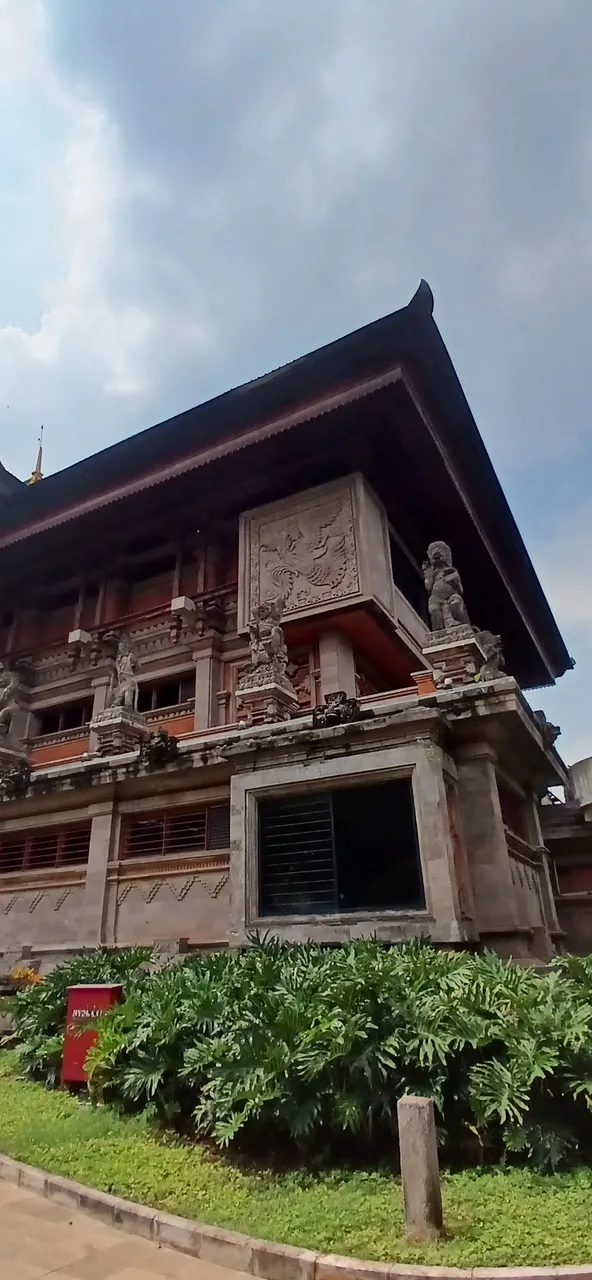



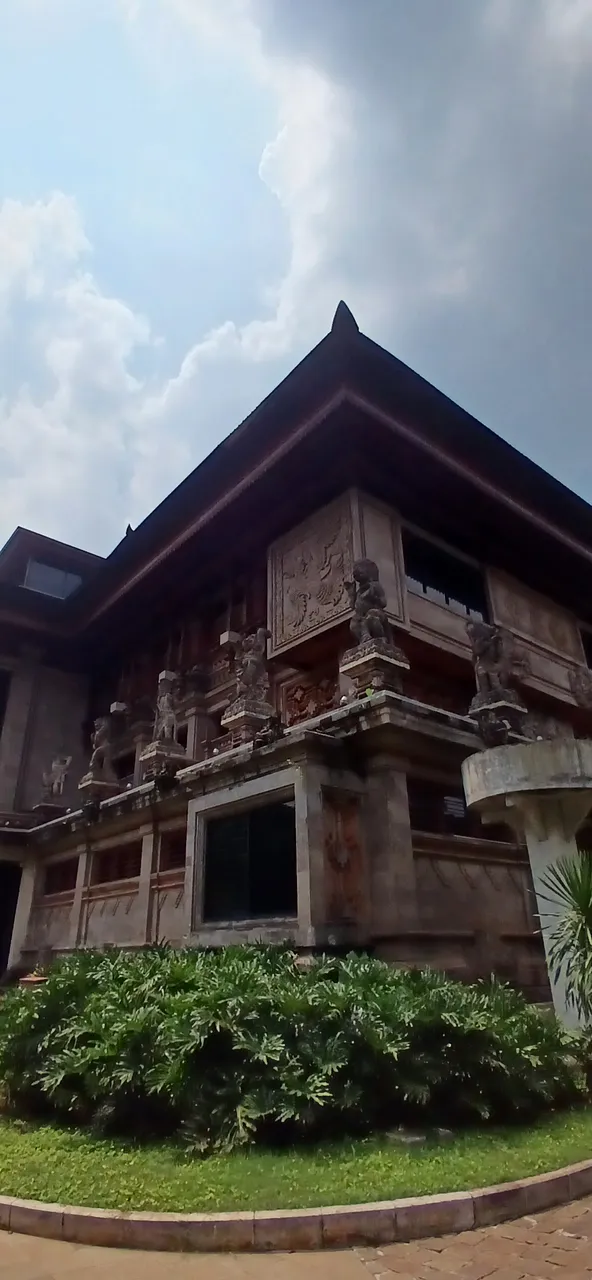
After passing through the front facade, we are greeted by the exterior of the museum, which is carefully designed to present a traditional yet functional atmosphere. The front courtyard is very nicely designed, thick with Indonesian culture. It features an artificial pond and a small gazebo to the left of the entrance. As well as large wooden statues. To the right of the Indonesian museum building is also a large gazebo. In Indonesia such buildings are called Pendopo, and they are usually dominated by wood.



The museum's architects combined the symmetrical elements commonly found in traditional architecture with a modern circulation flow that makes it easy for visitors to explore the museum. Each corner of the museum is grouped by theme, such as history, culture and fine arts. The placement of artifacts and cultural displays inside is also designed in such a way as to highlight the rich heritage of the archipelago.
One of the interesting elements of the Indonesian museum building is the use of distinctive carvings from various regions in Indonesia as decorative elements. This touch of carving is not only an aesthetic element, but also a way to preserve local culture through the medium of architecture.
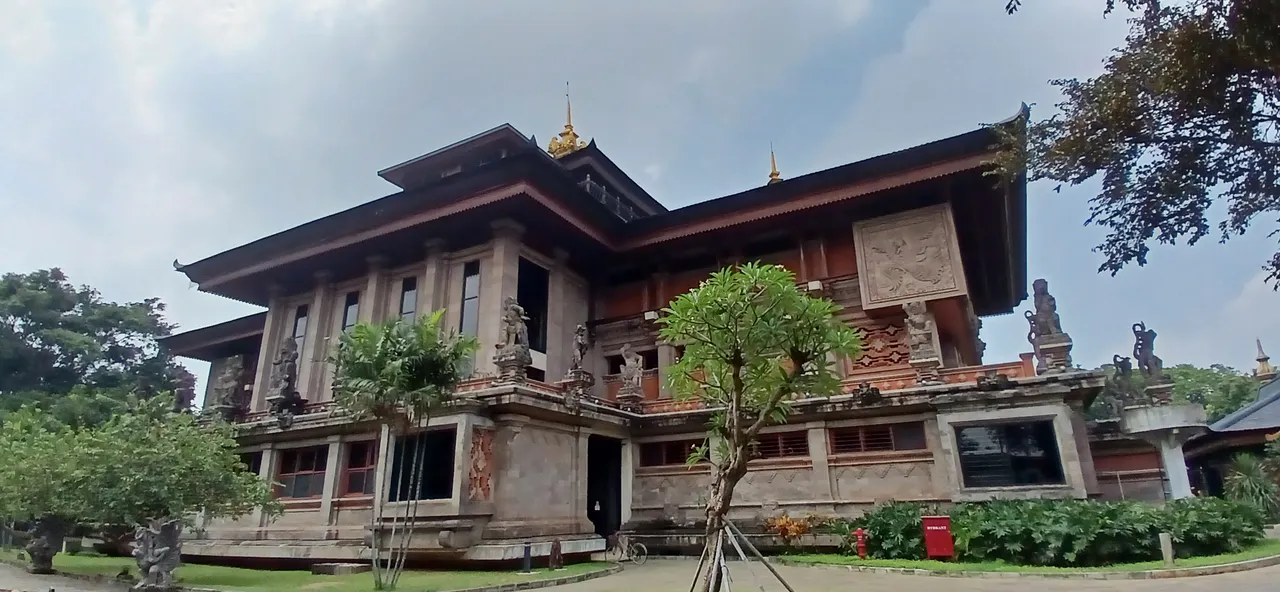
Museum Indonesia has a large pond that symbolizes a lake, surrounded by shady trees and typical Indonesian plants. In the center of the pond, there are statues of Hindu-Balinese deities standing gracefully above the water, creating a sense of serenity and spirituality. At the back of the museum, you will feel a calmer feel compared to the front, as if the design invites visitors to contemplate and appreciate the richness of the culture more deeply.


Moving to the back of the museum, the architectural design is even more fascinating. This is where we see how nature and architecture come together in perfect harmony. The museums in TMII, especially Museum Indonesia, have a large garden at the back, designed as an extension of the main building. This garden is not only an open space, but also a place to represent Indonesia's natural beauty.




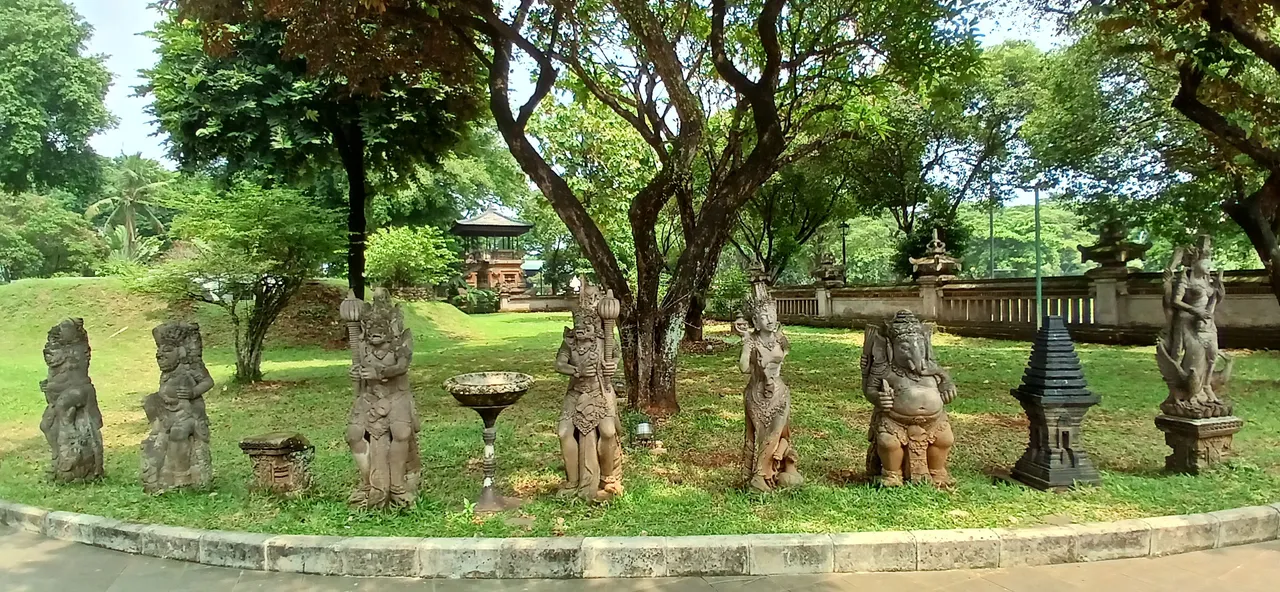
In terms of functionality, the museum building at TMII is not only made to house a collection of historical objects, but also designed to create an educational experience for visitors. Every corner of the museum provides rich information about Indonesian culture and history, making architecture not just a support, but also a medium that conveys stories.
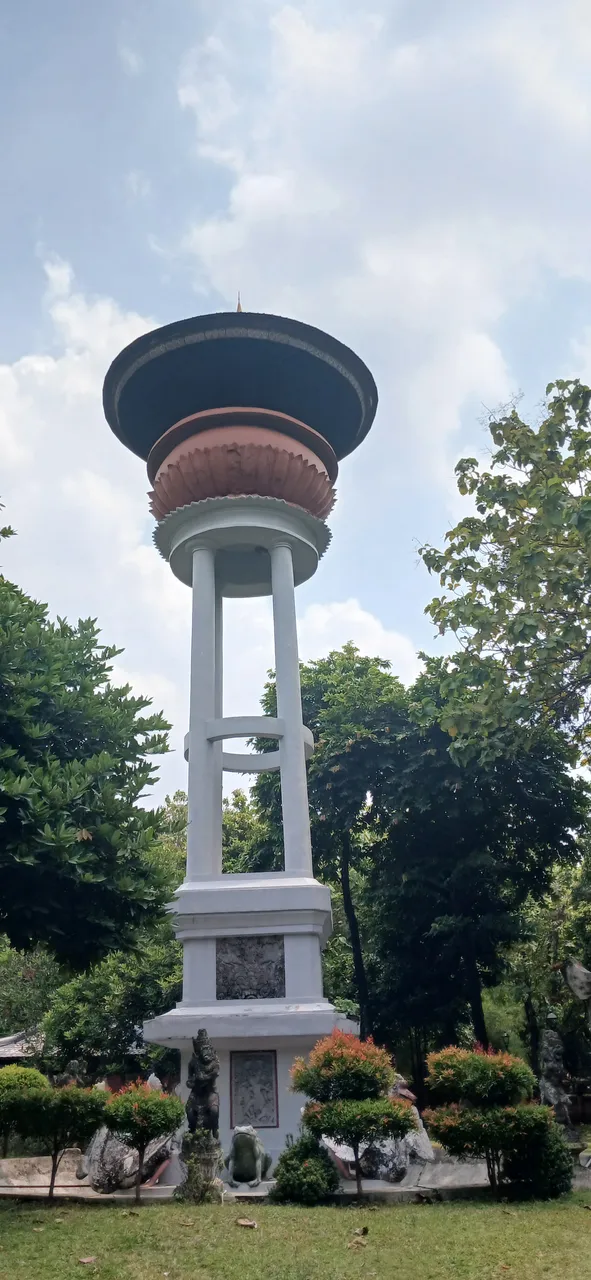
Alright,our journey into the beauty and richness of museum architecture at TMII. Every detail presented in the design of this building reflects how rich the cultural heritage of the archipelago is. For those of us who love architecture, TMII is not only a place to visit, but also an endless source of inspiration. Hopefully, this article can provide a clearer picture and increase our appreciation for these amazing architectural works.
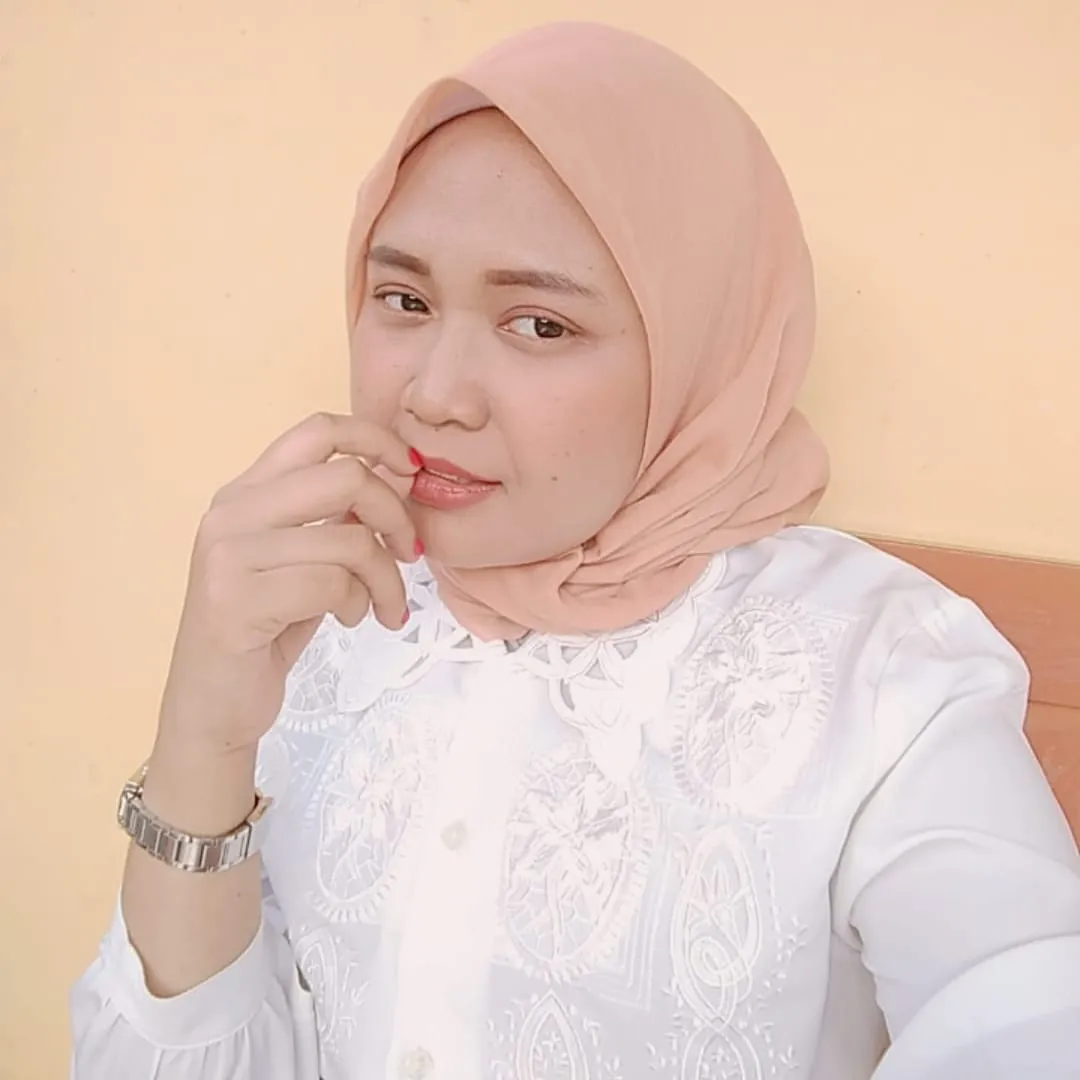
Devy Swan
Devy Swan is a girl with a lot of dreams and imagination.She likes cooking, singing and traveling. Recently, in the last two years to be exact, she started learning to write. Although her writing is still not very good, but she has a hope that one day she will have her own book.